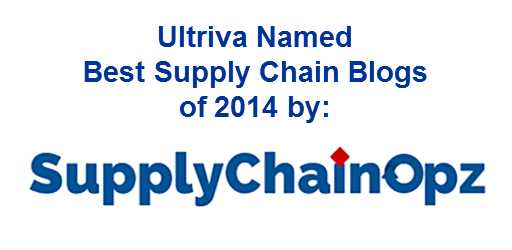Dedicated inventory locations, while not required, are much easier to establish and maintain when a part is on supplier eKanban for two reasons. First, with supplier eKanban the supplier is required to ship materials in standard lot and container sizes which often dictate the type of storage. Secondly, maximum inventory levels are more predictable with eKanban allowing you to plan dedicated storage space for each item. Maximum inventory for an eKanban item = (Total # of kanbans in loop) x (standard kanban lot size).
According to Nandu Gopalun, Professional Services leader with Upland, Ultriva by Upland provides loop size variability. He outlined the distinct advantage that can be achieved with dedicated inventory locations. The grocery store always keeps items in the same place making the shopping experience easier. Similarly, loop size variability helps the material handler to handle the inventory so they do not have to chase the parts needed.
Secondly, if parts are in different places, the material handler may need to walk a distance to get a part. This process can be made easier and leaner when the part is placed closer to the worker. If the inventory goes out of sync, the buyer will need to order more. Loop size variability keeps stock in one place so it will be easier to manage.
Thirdly, in multiple locations, the partials will get filled and the warehouse will run out of space over a period of time, so there is a need for additional manpower to consolidate and manage inventory constantly.
Kanbans are usually size-based on historical demand, but Ultriva by Upland has created a way to look into history as well as into future demand, building a plan to size the future. Ultriva manages the spikes by using non-replenishment cards which will automatically be destroyed based on the number of cycles or seasonality. There is no need for planners to take the cards out of the system. Seasonal resizing helps the buyer/planner to size the kanban easily.
Loop size does not diminish the importance of lot tracking, inspection, and integrating quality into the supply chain. The risk of encountering a quality issue is significantly higher when making advanced purchases of material based solely on special price offers instead of buying what is needed just in time. Supplier eKanban allows suppliers to input lot number, charge number or any other traceability value at the time of shipment. This number could be easily tracked all the way through to finished goods production. Nandu indicated that the Ultriva system integrates quality into the supply chain instead of making it a side process.
Supplier eKanban systems can improve productivity of purchasing and receiving processes. Receiving processes are streamlined by using a single barcode (or RFID) scan and automating the PO receipt with the respective ERP system. When buyer productivity improves, it frees up time for them to act as strategic sourcing agents and focus on continuous improvement projects with supply chain partners. A common theme for strategic improvement projects include supplier lead time reduction and inventory velocity improvement.
One of the biggest challenges to building a demand driven supply chain is deciding where and how to get started. We have all heard about corporate edicts to conduct supplier kaizen events to help suppliers implement lean principles and practices. Smart companies have recognized that a properly deployed supplier eKanban system becomes a catalyst for building a demand driven supply chain by providing a tool set that systematizes lean best practices, resulting in benefits to both the manufacturing firm and to their supply chain partners.
A good place to start is with a free inventory optimization assessment to identify candidate items/SKUs to transition from push or MRP forecast-based material replenishment methodologies to pull-based replenishment supported by a supplier eKanban system. Ultriva by Upland helps to identify which suppliers and parts are the best candidates to start a supplier eKanban program. The assessment also helps determine the potential financial impact of deploying supplier eKanban.



